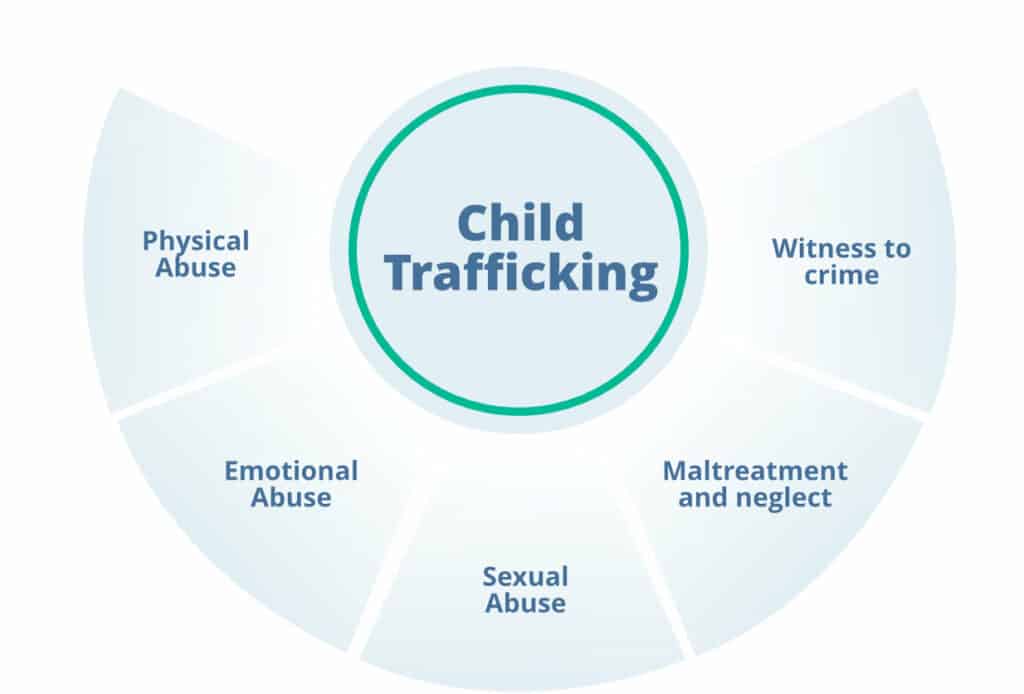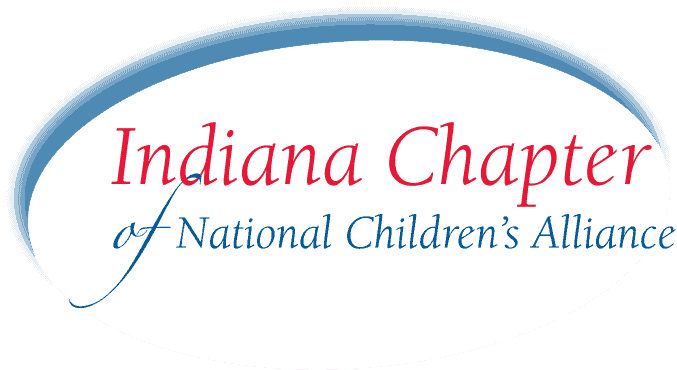Child and human trafficking cases often involve more than sex. While sex trafficking — which involves moving people around to be bought or sold for prostitution — is a part of child trafficking, it is not the only part.
Child trafficking is anytime a child or young person is tricked, forced, or persuaded (often from blackmail or a need for money) to leave their home and are transported around the country.
Children are most often trafficked by force, fraud, or coercion for:
- Benefit fraud
- Sexual exploitation and prostitution — including cases where children are sold for clothing, food, shelter, or anything of value
- Domestic slavery, such as cleaning or childcare
- Committing crimes, such as moving drugs or theft
Regardless of the age of the victim, trafficking is modern-day slavery. Human trafficking cases in Indiana most often involve sex trafficking victims, but labor trafficking is common across the country, especially near U.S. borders and in certain agricultural zones to transport drugs.
In most cases in Indiana, about two-thirds of cases involve human trafficking by a family member. These are kids who are being sold by a parent for money, perhaps to pay for rent or to buy drugs.
Child trafficking includes nearly all kinds of abuse

Children who suffer from trafficking experience many types of abuse and neglect. This includes physical abuse, emotional abuse, neglect, sexual abuse, and the trauma that comes from witnessing crimes.
In addition, these children are forced by traffickers out of school, seldom receive medical care, and are drained of a happy, healthy childhood. Survivors often struggle for years or the rest of their lives to heal and establish their own identities.
We don’t know how many human trafficking cases there really are
Indiana’s geographic location makes Indianapolis and areas along the state’s many highways a logistics “hub” for human trafficking.
In 2021, the National Center for Missing and Exploited Children received 17,200 reports of possible child sex trafficking in the U.S. The National Human Trafficking Hotline maintains a database of Indiana human trafficking cases, but in 2020 it only reports 140 cases — a number that is artificially lower than reality because most child and human trafficking cases don’t present initially or at all as a federal human trafficking matter. Instead, they are categorized foremost as something like, “sexual abuse”.
When a child comes to a Child Advocacy Center, for instance, federal, state, or local police may have rescued a child from suspicious activity, but the overarching reason for the response from law enforcement is frequently sexual abuse.
The reasons for this are complex, but one example situation involves children being transported in semi-trucks. These children don’t necessarily stand out at a highway rest stop. A victim is also unlikely to know how to ask for help from passers-by. It’s not until a person witnesses something that seems distinctly out of order — such as a tender-age child being handed over to someone else or visibly being abused that a report is made to 911.
In the cases where a child is discovered by the Indiana Protection for Abused and Trafficked Humans (IPATH), one of 42 task forces nationwide funded by the Department of Justice to address the issue of human trafficking, minors often do not know the true identities of their abusers. If they can identify them, their whereabouts are challenging to locate.
As a result, most reports that involve trafficking, or might involve trafficking, are only recorded as “sexual assault” or something more specific. Even if a child may have suffered multiple forms of abuse, reports usually only record the case as a single case type.
Here’s how you can spot the signs of child trafficking
It’s likely not obvious a child has been or is being trafficked. But you might notice these or other unusual events:
- Spending an unusual amount of time doing household chores, particularly those that seem out of scope for their age
- Rarely leaving their home or playing with other children
- Appear to be orphaned or living apart from their family
- Appearing confused or unsure of what city, town, or country they are in
- Are unable or reluctant to share an address or phone number
- Be seen in inappropriate places, like young children at a truck stop at unusual hours
- Not be registered in a school or educational program
- Have more money or unexpected possessions you wouldn’t expect, such as expensive electronics or jewelry that seem out of scope for their age
- Have visible bruises or injuries, particularly those that likely came from a workplace injury (such as broken toes or burns from ovens)
- Give a story about their childhood or home life that is unusually similar to other children, such as those in the same school or neighborhood
If you suspect child trafficking, call 911
Call 911 in an emergency where law enforcement may be able to intervene quickly. But if you suspect force, fraud, or coercion, call:
- The Indiana Child Abuse Hotline at 1-800-800-5556
- The National Human Trafficking Hotline at 1-888-373-7888
- Your local FBI field office, state police, or law enforcement or via 911
When making a report, try to help hotline operators by noting the kind of transportation you witness, license plate numbers, the direction of travel, the behavior of victims or suspected abusers, clothing, height, build, and any identifying factors that might help investigators.

